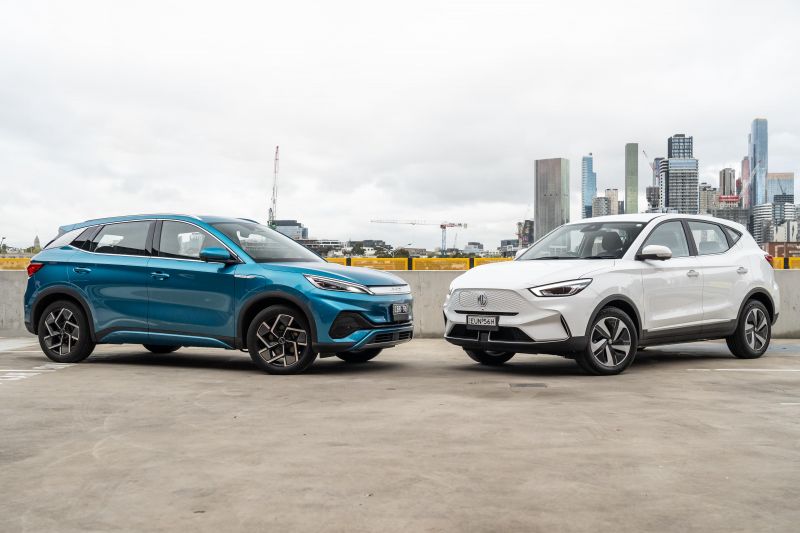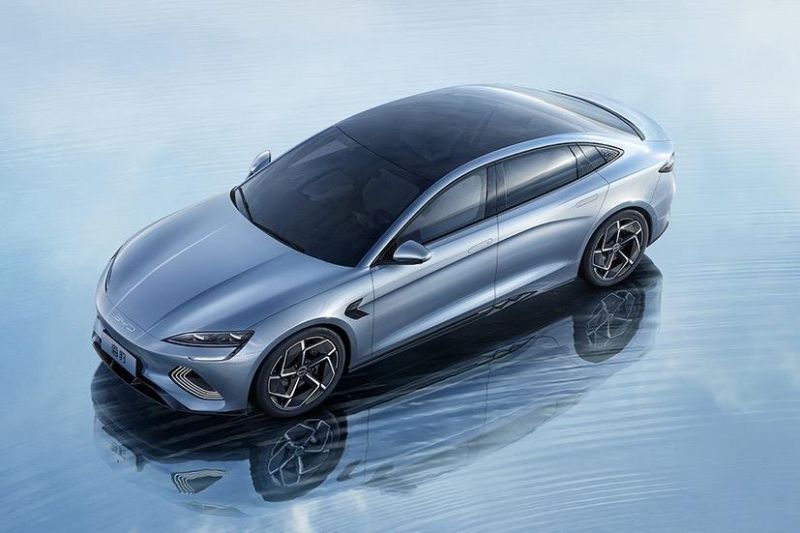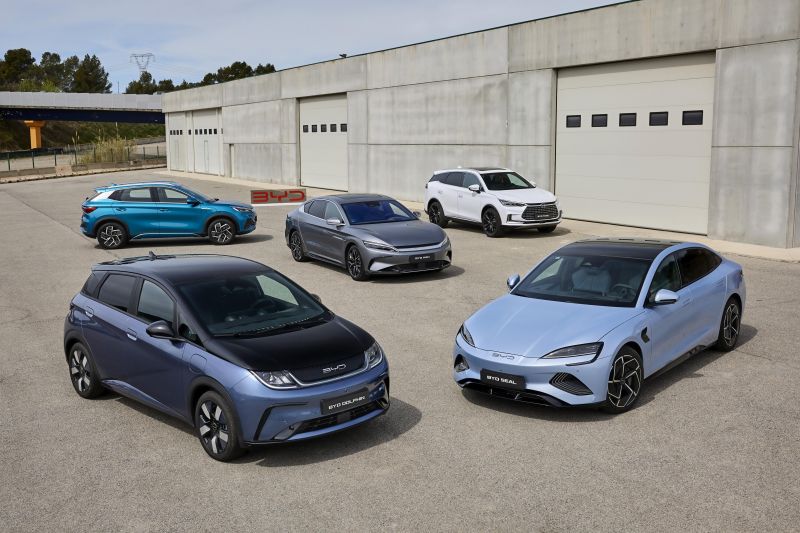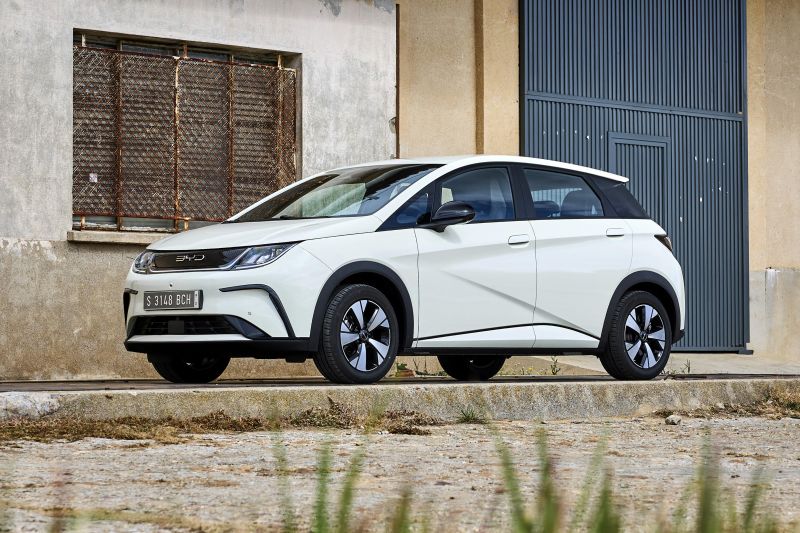Chinese electric vehicle company BYD is already off to the races in Australia as the second-largest seller of EVs behind Tesla, but its aspirations are much more expansive.
According to the company’s Australian distributor, the plan is to achieve 50,000 annual sales here over the next few years, supported by an expansion of its EV line-up – including sports sedans and utes.
This equates to about five per cent market share which, based on 2022’s sales figures, would place BYD well inside the top 10 brands list alongside fellow Chinese carmaker MG (49,582), and ahead of better-known marques such as Subaru, Volkswagen and Nissan.
“Our aspiration is to, within the next couple of years, be 50,000 units, so five per cent of the market. And you can probably expect another couple of cars from us in 2024,” claims Mark Harland – chief operating officer of EVDirect, BYD’s local distributor and seller alongside dealer group Eagers.
“We don’t necessarily look at Tesla as our direct competitor, though from an EV point of view they’ve set the benchmark,” Mr Harland added. “We look at BYD as a mainstream competitor to Toyota, Kia, and other cars. We want BYD to be on those buyers’ shopping lists.”
Mr Harland, a long-time executive at General Motors in Shanghai and for Holden, said the pace at which BYD moves was something he’d never seen “in my 25+ years in the automotive industry”.
While we are inclined to take such bold sales aspirations with a dump truck-sized pinch of salt – EVDirect is no stranger to making huge claims – the company is inarguably putting runs on the board in the Australian market, lending a degree of credence.
BYD’s first vehicle sold at proper scale in Australia was the Atto 3 SUV, which has racked up 4664 deliveries this year for 14.5 per cent EV market share. It even outsold the Tesla Model 3 in May.
With the 10,000th Australian-market Atto 3 now on the boat, the company is next planning to launch a smaller and cheaper EV hatchback later in June called the BYD Dolphin – expected to be the cheapest electric car on sale here, potentially even sneaking below $40,000.
Next cab off the proverbial rank should be the now overdue BYD Seal sports sedan to rival the Model 3, Polestar 2, and Hyundai Ioniq 6.
“Plans are, fingers crossed, that we have Seal in the country before end of the calendar year,” Mr Harland added. “I’d like to have some on the ground, it’s just a matter going through compliance and ADR and ticking all the boxes.
“But we have production of the car in right-hand drive and left-hand drive [up and running].”
New player EVDirect learned the hard way to make sure it meets all the requisite Australian Design Rules, with the red tape leaving it red-faced after hitting snags with the Atto 3’s child-seat attachments shortly after market launch.
Beyond this the brand has a growing range of EVs in other segments to select from, with cars like the older-design BYD Tang large SUV due to enter a new generation soon, and the BYD Han large sedan poised for an update.
The other major addition to the BYD range, and the clear key to its vast volume aspirations, is the planned launch of an electric and plug-in hybrid dual-cab ute range – developed with Australia (and therefore RHD) in mind from early in the program.
“No commitments on the pickup ute, but let’s just say that its definitely on the roadmap. And BYD moves quickly,” said Mr Harland.
“Do we do a plug-in hybrid or dual-motor [EV], or maybe have the choice of both for people who need extra range? None of that is settled, those are the discussions that are going on right now.”
The company has previously said the ute will come to Australia in 2024.
This isn’t a pipe dream, since the yet-to-be-revealed BYD ute was in fact photographed recently both inside and out, meaning it’s close to market launch in China where pickups are booming on the back of regulatory changes.
China will lead Australia’s nascent electric workhorse market unless Toyota, Ford, Isuzu and the other usual suspects get a wriggle on. The BYD electric ute should compete against the likes of the LDV eT60, plus the incoming JAC T9 EV and (potentially) the Radar RD6 locally from 2024-25.
One aspect to all this that should make established OEMs pay attention is the way EVDirect can rely on BYD’s factories to rapidly scale-up output due to its degree of vertical integration, and navigate its way around issues such as port congestion.
BYD makes its own chips and batteries, meaning it is less buffeted about by global supply chain snags than OEMs more reliant on tier 1 suppliers.
On the transportation front, the company has pivoted rapidly to drive finished Atto 3s right off the factory line straight into sealed shipping containers, thereby avoiding having its cars sitting around in holding yards and picking up bugs and seeds, like so many other vehicles.
“We don’t have shortages of batteries, we don’t have shortages of chips,” Mr Harland claimed.
BYD isn’t the first Chinese brand to find innovative ways to skirt around shipping problems, with MG having recently chartered its own ship to deliver more than 3000 SUVs and hatchbacks to Port Kembla rather than sharing space with other brands.
MORE: Check out BYD’s upcoming electric, plug-in hybrid ute
MORE: How BYD is avoiding quarantine delays in Australia
MORE: Hundreds of BYD Atto 3 EVs for SIXT Australian rental fleet




